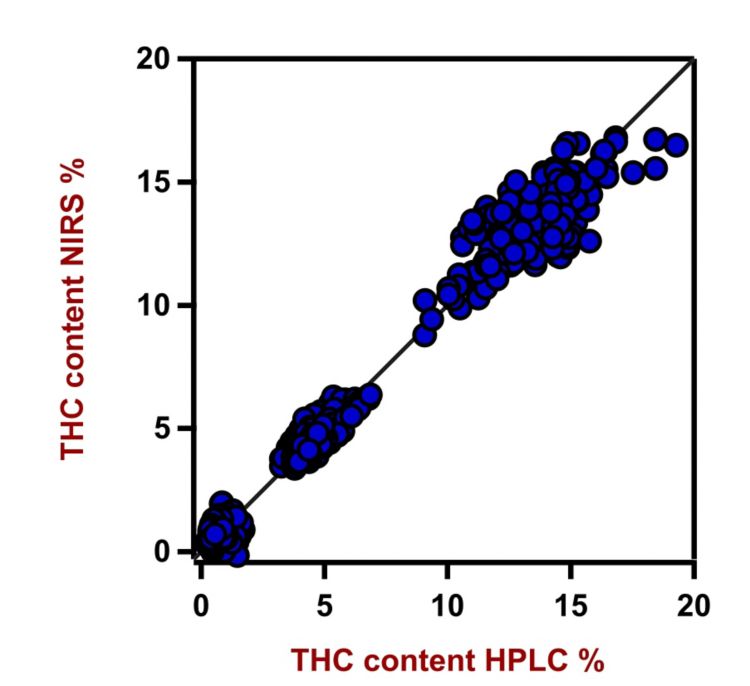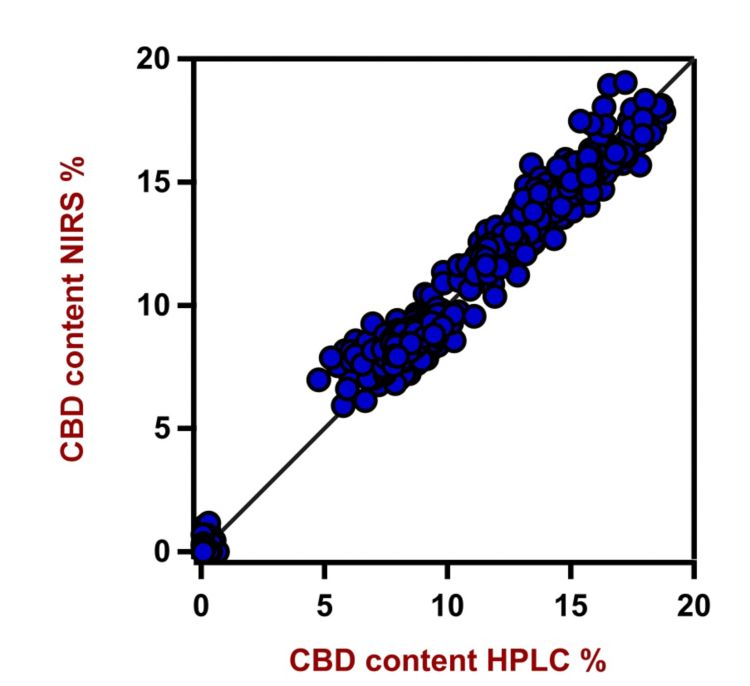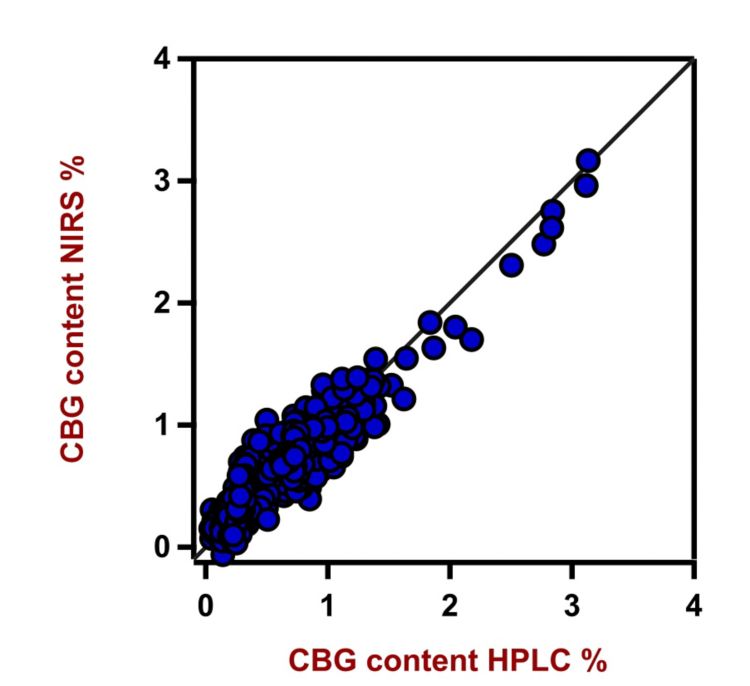Cannabis has a long history as a recreational drug and medically as an analgesic and antispasmodic agent. Discovery of the major cannabinoids tetrahydrocannabinol, cannabidiol, and cannabigerol (THC, CBD, and CBG) has resulted in increased interest in their medical effects. While THC is psychoactive and classified as an illicit drug of abuse in most countries, CBD has a legally accepted status in many parts of the world for medicinal purposes. CBD is believed to relieve anxiety and stress and to promote better sleep. Because of the different effects and possible legal consequences, determining the cannabinoid profile of cannabis is of high interest.
Typically, cannabis potency testing is performed by HPLC analysis. While HPLC can detect low concentrations of less abundant cannabinoids, it requires chemical reagents and it is quite time-consuming. This Application Note explains why near-infrared spectroscopy (NIRS) is a superior method for the quantification of THC, CBD, and CBG in dried cannabis because it provides results in less than a minute and does not require any chemicals.

A total of 702 dried cannabis samples with varying THC, CBD, and CBG concentrations were used for this study. The Vis-NIR spectra were acquired on a Metrohm DS2500 Solid Analyzer (Figure 1) equipped with the DS2500 Holder. A 400 mg portion of each sample was ground by hand using a grinder, then placed in a NIRS mini sample cup. Afterward, a 4 mm total pathlength diffuse gold reflector was positioned on top of the prepared cannabis sample. Data collection and model development were carried out with the Vision Air Complete software package.
| Equipment | Metrohm number |
|---|---|
| DS2500 Solid Analyzer | 2.922.0010 |
| DS2500 Holder | 6.7430.040 |
| Mini sample cups, 10 pcs incl. 100 disposable backs | 6.7402.030 |
| NIRS gold diffuse reflector, 4 mm total pathlength | 6.7420.020 |
| Vision Air 2.0 Complete | 6.6072.208 |
The obtained Vis-NIR spectra (Figure 2) were used to create prediction models for THC, CBD, and CBG content in dried cannabis. To verify the quality of the prediction models, correlation diagrams were created which display a correlation value (R2) between the Vis-NIR prediction and primary method (HPLC) values. The respective figures of merit (FOM) display the expected precision of a prediction during routine analysis (Figures 3–5).
Result THC

| Figures of Merit | Value |
|---|---|
| R2 | 0.979 |
| Standard Error of Calibration | 0.71% |
| Standard Error of Cross-Validation | 0.73% |
Result CBD

| Figures of Merit | Value |
|---|---|
| R2 | 0.978 |
| Standard Error of Calibration | 0.74% |
| Standard Error of Cross-Validation | 0.75% |
Result CBG

| Figures of Merit | Value |
|---|---|
| R2 | 0.849 |
| Standard Error of Calibration | 0.16% |
| Standard Error of Cross-Validation | 0.17% |
This Application Note presents a Vis-NIR method that is excellently suited for the fast quantification of the three main cannabinoids in cannabis (i.e., THC, CBD, and CBG). Compared to the standard HPLC method (Table 2), cannabis analysis with near-infrared spectroscopy saves up to 30 minutes of time per analysis. Additionally, NIRS requires no chemical reagents and is a non-destructive analytical technique.
| Parameter | Method | Time to result |
|---|---|---|
| THC, CBD, CBG | HPLC | ∼10 min (preparation) + ∼20 min (HPLC) |
 Share via email
Share via email
 Download PDF
Download PDF